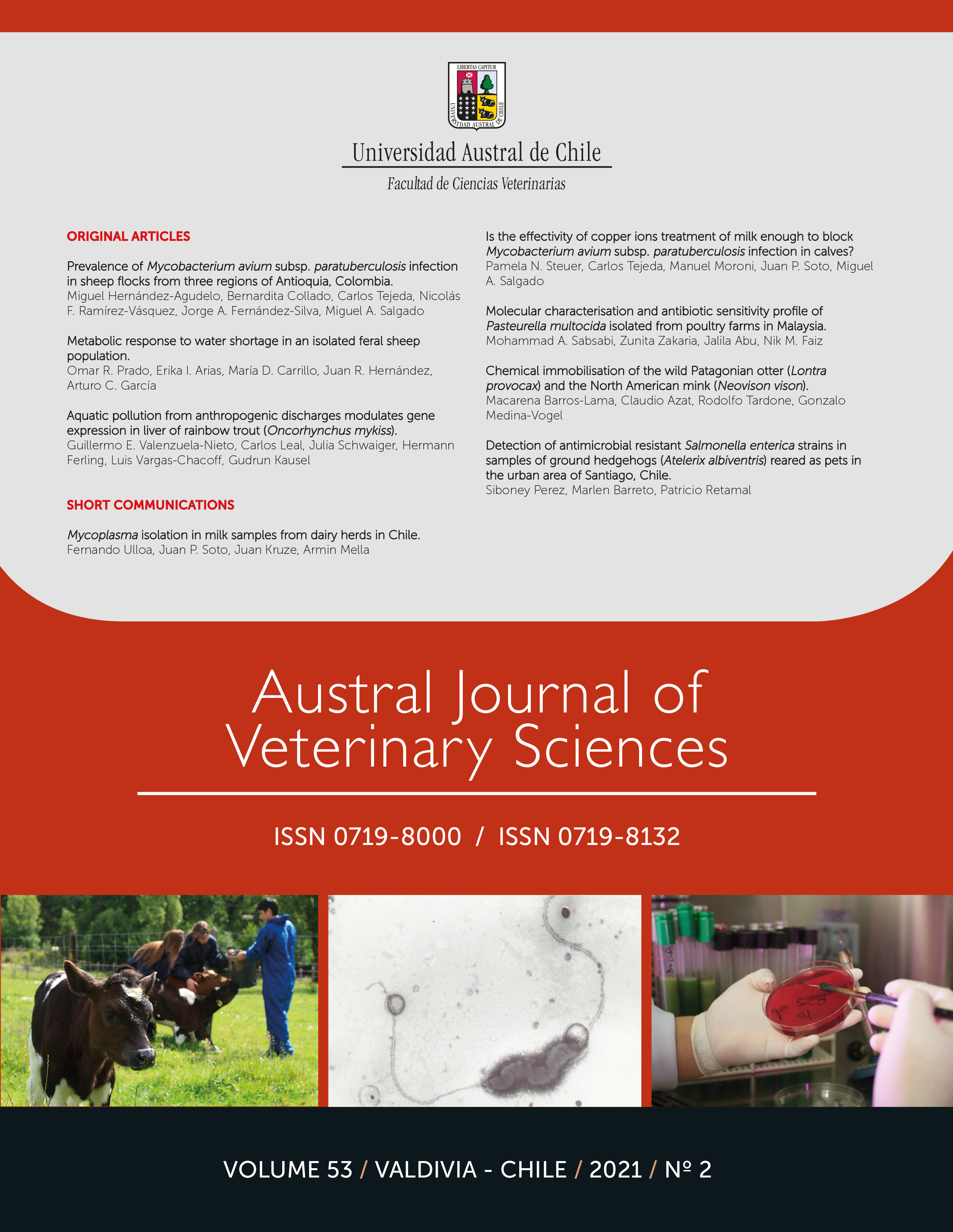Aquatic pollution from anthropogenic discharges modulates gene expression in liver of rainbow trout (Oncorhynchus mykiss)
Main Article Content
Abstract
With the aim to characterise the biological impact of anthropogenic discharge in a river, gene expression in fish was evaluated as a biomarker for mixture effects of potential toxic compounds in the aquatic environment. Adult male rainbow trout (Oncorhynchus mykiss) were used as monitoring organisms. Within the German experimental set up, trout were exposed actively for 28 days in biologically purified sewage as well as in river water up- and downstream of the sewage treatment plant (STP) effluent. In a different approach, wild trout were captured in southern Chile near anthropogenic discharges. Fish were taken from river Maullin receiving sewage from a settlement and from river Pescado influenced by effluents from a fish farm. In vivo effects were assessed by RT-qPCR analyses of biomarker gene expression, vitellogenin (vg), metallothionein (mí) and cytochrome 1A (cyplA) in liver samples with primers amplifying specific sequences previously confirmed by cloning and sequencing. The modulation of expression of marker genes involved in metal stress, reproduction and detoxifying systems in the liver of male rainbow trout revealed organismal response to anthropogenic contamination in two different study areas, such as Chile and Germany, thereby indicating a potential risk on the aquatic ecosystems.

